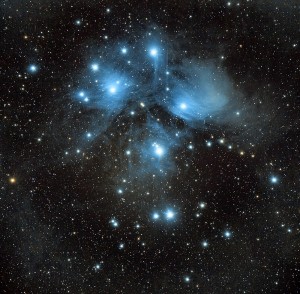So the vignetting on the EON persists through the new imaging train. It’s just an overall bad combo with a full frame DSLR, but this is how we learn. I wanted to take a step back and get some good widefield data to lick my wounds before diving back into the prime focus challenges, so I went back to the side-by-side saddle and native EF mount to the 600mm f/4L IS for yesterday’s imaging session. The moon is waxing gibbous today at about 56% and growing fast, so when the weather broke yesterday afternoon, I knew I had to take advantage of the night. I headed up to the dark site in Huntsville (~52 miles one way for me) around 6:30pm and started setting up my gear. By the time my buddy, Dave, arrived at 8, I was polar aligned and ready for the stars to start popping out. I started with Andromeda (which I’ll process and share later tonight) and ended with the Seven Sisters. I wanted to image the Great Orion Nebula, but my camera battery AND my DC power pack driving my equatorial mount and dew heaters both were depleting quickly, so I didn’t make Orion’s rise before having to pack up. It was disappointing, but it did spur me to order a AC to DC adapter for all three equipment power points to arrive before the weekend should be fortunate enough to get another clear night. What a silly reason to end a gorgeous imaging night early!
My previous post shared the disappointing, noisy, and light lost attempt at M45 through my 130mm f/7 triplet. This is the do-over.
Messier 45 – more commonly known as Pleiades – is only about 444 light years from us… only. It is quite bright and clearly visible to the naked eye without any form of telescope or binoculars on a clear night. In Japanese, the star cluster is called Subaru… and happens to be the logo for the automotive manufacturer bearing it’s namesake.

